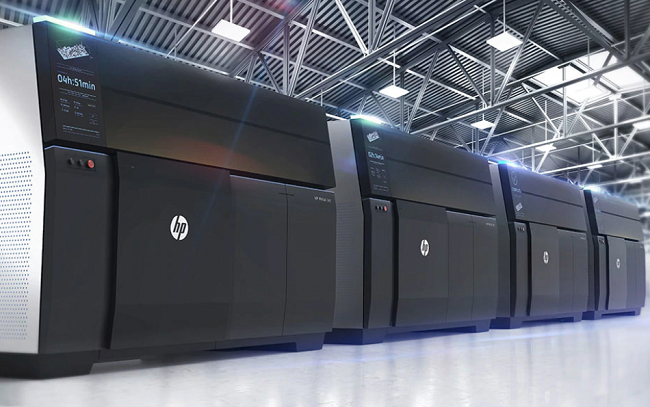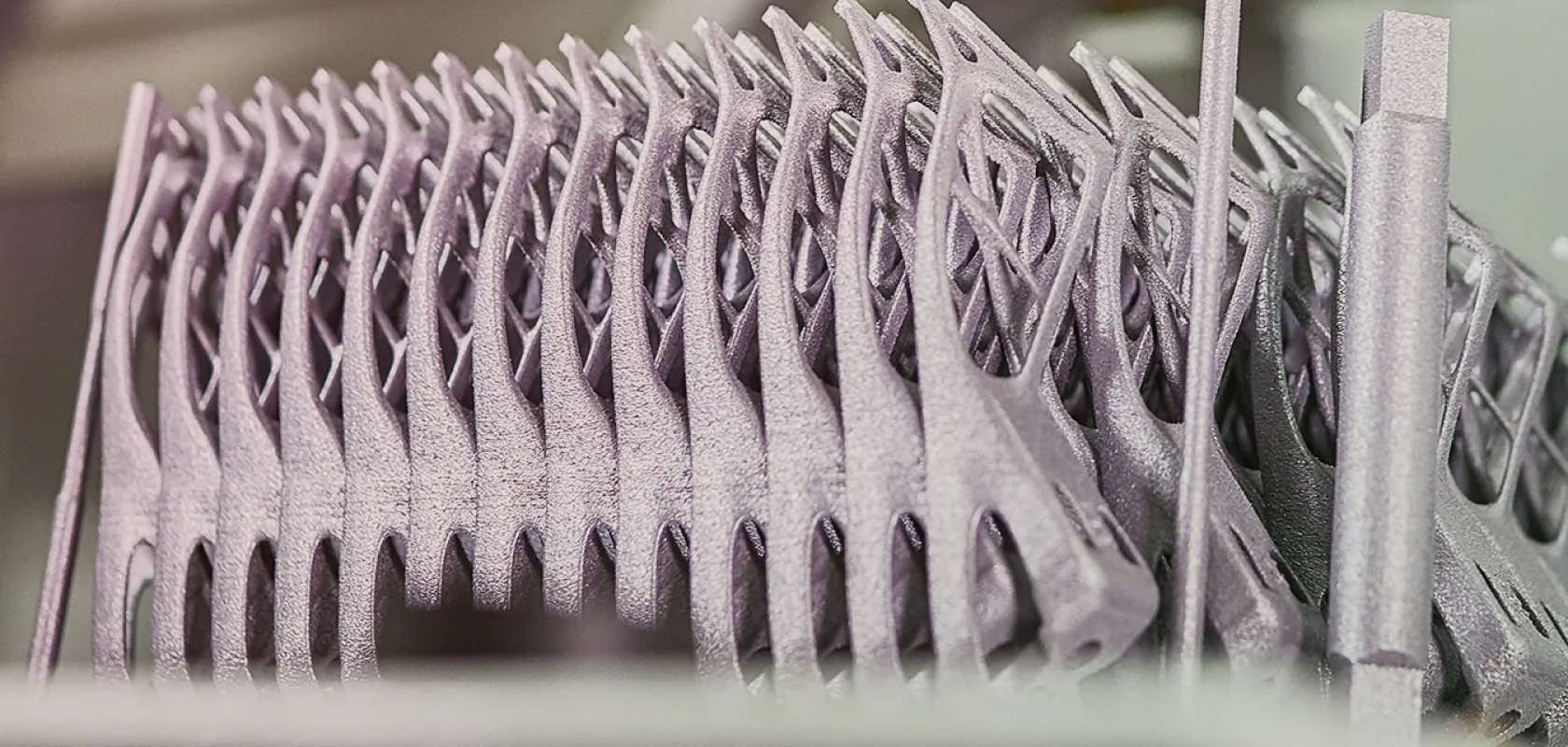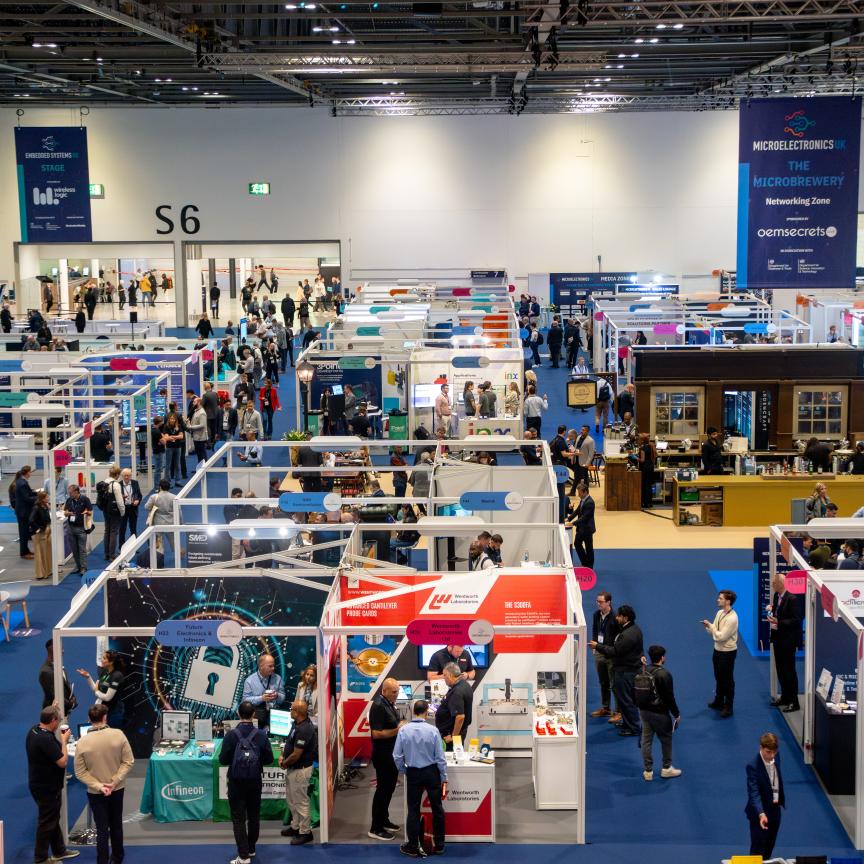Matthew Dale reports from a panel discussion at Photonics West, where experts discussed 3D printing’s potential for industrial production
Additive manufacturing (AM) is moving closer towards being used for industrial manufacturing, and several developments in 2018 have helped it move further in this direction, panellists commented during Photonics West’s AM industry session in February. However, to improve uptake of the technology, certain challenges need to be addressed, such as training more engineers in digital design, getting companies to change their approach to design, and standardising processes.
Converging developments
The panellists pointed to a number of ongoing developments in 2018 that are helping drive the technology further towards industrialisation.
Ralf Kimmel, general manager of the Trumpf laser division in North America, commented that the use of multiple lasers in additive manufacturing, the increasing size of parts being manufactured, the rise in the number of materials being qualified for additive manufacturing, and the improved consistency in quality being achieved over the build plate, are all examples of development steps happening within the sector. For him though, one of the most important ongoing developments is that additive manufacturing is getting more and more mature as a technology. ‘We are finding additive manufacturing design engineers now, the market is able to think additive more and more,’ he said.
Behrang Poorganji, director of materials technology at GE Additive, noted how existing technology – such as sensors for in-situ monitoring, artificial intelligence and machine learning – is being applied more to improve the technology: ‘Now, we are realising more and more the reality and challenges of additive. The good news is that technology has developed with a fast pace, which is helping us overcome these challenges.’ He also described that the number of parts now being certified for using in industries such as aviation, automotive and medical is increasing, which is helping the additive manufacturing sector grow.
Both Poorganji and Lynn Sheehan of Allagi – a start-up that develops metrology and inspection solutions for additive manufacturing – agreed that HP’s announcement of its Metal Jet technology towards the end of last year was a significant development in the field. HP claims that this new technology is up to 50 times more productive than competitive binder jetting and selective laser melting solutions when producing up to 100,000 parts in series. The new system is able to produce multiple parts simultaneously, or produce larger parts, with a binder jetting build size of 430 x 320 x 200mm. It builds in a 1,200 x 1,200 voxel grid with layer thicknesses between 50 and 100µm.
Sheehan added that another interesting development he saw in 2018 was evidence of 3D printing entering the consumer market, referring to wholesale firm Costco offering shoppers the option of having their feet scanned and a pair of custom insoles printed by firm Resa Wearables in less than an hour.
Examples such as this are evidence of how developments in the additive sector are converging to drive the technology towards industrialisation. Melissa Orme, CTO of California-based additive firm Morf3D, added that converging can also be seen in the factories now being established by entities such as Siemens, which opened up its £27 million 3D printing facility for its subsidiary Materials Solutions last year, and in the mergers and acquisitions taking place, such as Carpenter Technologies’ $81 million acquisition of LPW Technology towards the end of last year. ‘There has been more investment capital into additive manufacturing this year than ever before,’ she commented.
Barriers against broader adoption
While the evidence suggests that additive manufacturing is being driven towards industrialisation, a number of barriers to further technology adoption were identified by the panel.
‘The biggest challenge is people,’ Poorganji stated. ‘We need to change our mindset, we need to build a different vision in our designers, in our engineers, in our quality tool people, in our materials engineers – this is the most important challenge.’
This vision will require ‘design for additive manufacturing’ (DFM), a concept that has emerged thanks to the excellent design freedom offered by additive technologies. DFM focuses on addressing manufacturability concerns early in the design phase in order to enable the optimal manufacture of parts. ‘If you try to just 3D print a heritage part it’s going to be more expensive and you’re going to say this is not a good technology. So you have to …add functionality, consolidate parts… you can add a lot of value with additive manufacturing, but this requires designing for additive,’ Orme commented.
Convincing the executives of large OEMs to begin designing for additive manufacturing could still prove difficult despite the benefits it offers.

The release of HP's Metal Jet 3D printer last year was identidied by panelists as being a significant development for the additive manufacturing sector. (Image: HP)
However, according to Orme, the supply chain for additive manufacturing is not yet at a level where it can address the demands of these firms: ‘A C-level executive from a large OEM said to me: “By 2022 we have to have 500 machines to satisfy all the parts we want to make” …There are not 500 non-captive additive manufacturing machines on the planet, and at this point I don’t think each machine manufacturer is at a place right now where they’re going to make 500 machines of a certain model in one year. So the supply chain doesn’t actually exist.’
While it must be the case then that certain OEMs are now considering additive manufacturing as an option for addressing their manufacturing needs, in Kimmel’s opinion, for industries such as medical and automotive – aerospace is already a well-established industry within the additive manufacturing sector – the demand for parts is not yet at the level required to drive real mass-production. He added that standardisation within additive manufacturing – concerning design, materials, and pre- and post-processing techniques – will be key in addressing this.
Cost per part was also identified by Kimmel as currently being too high to enable the widespread adoption of additive manufacturing: ‘Cost per part has not reached a level where it could be competitive in a wide range of applications where additive could theoretically be used. That’s a challenge, to get the materials at better cost levels, and make machines less expensive than they are today.’
Lastly, Kimmel commented that the current productivity of additive manufacturing is also a challenge against broader adoption, referring to the current six-day build time for a 400 x 400mm part by a single-laser additive machine. Orme said the use of multiple lasers can be used to increase build speed, though she emphasised that using four lasers does not mean that builds will be faster by a factor of four. She explained that by doubling the thickness of layers printed – for example from 30µm to 60µm – it is possible to halve the number of layers that have to be printed in total; however, this requires an appropriate adjustment of the laser parameters used, and also results in a loss of resolution when printing very fine features. ‘There is a trade-off – you can make parameters that are faster; however, often, there might be issues where there is limited gain, and so there are limits in terms of how fast you can print a part.’ Orme added that, through using four-laser systems and optimal parameters, it might be possible to build a large part in two days.
The reliability and repeatability of additive manufacturing needs to be improved, the panel noted, especially across multiple vendors. Orme explained that while an individual additive firm could produce a number of identical parts for a customer using a fixed process in multiple (identical) machines, that customer would not currently be able to approach multiple additive firms with their CAD design and have each firm produce exactly the same result – they would likely all come back with parts of differing mechanical properties. ‘If it [the part] is built in different ways, then it’s going to have different scan properties – you’re going to have different heat transfer issues, different micro-structures, different mechanical properties, and different geometric properties,’ she confirmed. ‘So, if you really want to achieve a repeatable process, then you have to define it [how the part should be built] – you can’t just expect everybody to have the exact same thing. With a fixed process, it’s repeatable, and I think we have to spread the word as well as we can by demonstration, and educate these people [customers].’
Another aspect that customers should be aware of, Sheehan added, is that there are a lot of post processing steps involved in additive manufacturing that require large amounts of equipment. ‘So for companies that are trying to implement an additive solution as part of their business, it doesn’t just involve purchasing a nice, well-made 3D printer, they have a whole infrastructure that they have to install…it’s not just a single part of their ecosystem,’ he explained.
‘As users start to adopt [additive manufacturing], they’re not as familiar with the technology – we have to help them with that, [answering questions such as] “How do you build a factory that includes all the post-processing equipment, and how do you keep that affordable for them in the cost-per-part for manufacturing?”.’
Educating the future workforce
During the sessions, the panellists discussed how the industry is addressing the current shortage of designers skilled in digital design for additive manufacturing – an issue highlighted by the additive panel at last year’s conference.
Orme, a former professor at University of California Irvine, commented that while each of the nine campuses of the University of California have courses on manufacturing techniques such as CAD and CNC machining, not one of them have a course addressing design for additive manufacturing. ‘I think that’s very lacking. I know that in America there are universities that have this [courses on additive manufacturing]; however, I could probably count them on one hand.’ She said that it’s often difficult for professors who have been teaching a course for a long time to alter the curricular, and that they can sometimes be resistant to this process. ‘That needs to change,’ she remarked. Kimmel affirmed that the situation is similar in Europe, although he added that universities have been swifter in understanding that they should include more courses for additive manufacturing than for traditional manufacturing processes. He highlighted that it took decades for existing laser processes such as welding to be addressed properly in course curricula. Poorganji emphasised that a more multi-disciplinary approach is needed for additive manufacturing education, commenting that designers should be taught about the machines, the materials involved, and the manufacturing processes themselves.
Although it seems universities are lacking in suitable coverage of additive manufacturing in their curricula, there are training courses currently available from entities such as ASTM, SAE, SME and Renishaw – which, according to Orme – are a very good stop-gap measure until the universities get up to speed with industry requirements.
Top image caption: Metal additive manufacturing is now being used to produce parts with optimised structures in series


